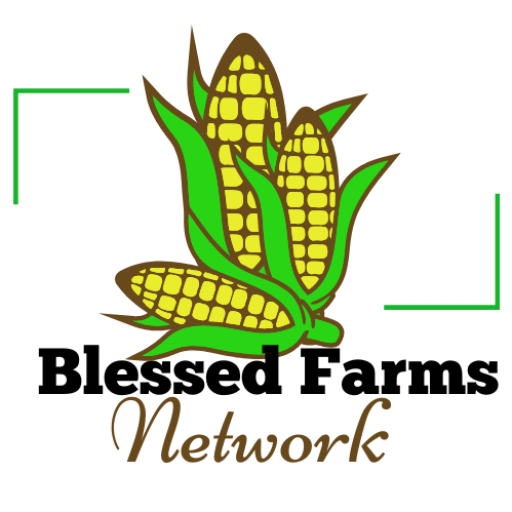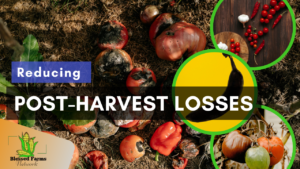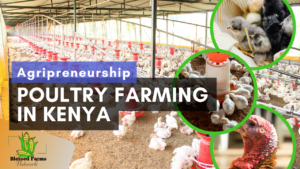Introduction
As the cost of commercial poultry feed continues to rise, farmers in Kenya are seeking sustainable and cost-effective alternatives to maintain productivity. Azolla, an aquatic fern with exceptional nutritional qualities, has emerged as a viable supplementary feed option. In this comprehensive study, we will explore Azolla’s potential as a poultry feed, including its nutritional benefits, specific applications for different types of chicken, comparisons to other alternatives like Black Soldier Fly larvae, and findings from previous research. We will also discuss practical considerations for farmers interested in incorporating Azolla into their feeding regimen.
What is Azolla?
Azolla is a small, fast-growing aquatic plant that thrives in water bodies under suitable environmental conditions. Its unique ability to fix atmospheric nitrogen through a symbiotic relationship with cyanobacteria (Anabaena azollae) enables it to accumulate high levels of protein and other nutrients. With a protein content of up to 30% (dry weight), Azolla is considered a superfood for poultry and livestock. It grows rapidly, doubling its biomass within 3-5 days under optimal conditions, making it a renewable and sustainable feed source.
Nutritional Composition of Azolla
The nutritional richness of Azolla makes it particularly valuable for poultry. It contains:
- Protein: 25-30% (dry weight), critical for muscle development and growth.
- Essential Amino Acids: High levels of lysine and methionine, important for tissue repair and egg production.
- Vitamins: Particularly Vitamin A, Beta-Carotene, and Vitamin B12, which enhance immune function and egg quality.
- Minerals: Rich in calcium, phosphorus, and iron, supporting bone strength and overall health.
- Carbohydrates: Provide energy for daily activities.
These nutrients contribute to the growth, productivity, and health of various poultry categories, from broilers to layers.
Applications of Azolla for Poultry
Azolla’s utility as a feed supplement is diverse, catering to the unique needs of different types of chickens:
- Broilers: Studies have shown that Azolla can replace 10-15% of commercial broiler feed without compromising growth rates. Its high protein content supports rapid weight gain, while the amino acids lysine and methionine are essential for efficient feed conversion. Research conducted in India demonstrated that broilers fed Azolla exhibited comparable weight gain and improved feed efficiency compared to those on a 100% commercial feed diet.
- Layers: For layers, Azolla’s beta-carotene and calcium content enhance egg production and improve yolk color. Studies indicate that incorporating 15-20% Azolla into layer feed can increase egg yield and quality. Additionally, its rich mineral content ensures strong eggshells, reducing breakage and waste.
- Young Chicks: Azolla is particularly beneficial for young chicks due to its digestibility and high vitamin content. It can be introduced gradually, starting at 5% of their diet and increasing to 10% as they grow. The availability of Vitamin A and iron in Azolla supports their immune development and reduces mortality rates.
Kienyeji (Indigenous) Chicken: Indigenous chickens, often reared in free-range systems, benefit significantly from Azolla as a supplementary feed. When added to their diet at 20-25%, it enhances growth rates and egg production, complementing natural foraging habits. Farmers have reported better health and productivity in Kienyeji chickens with Azolla supplementation.
Comparative Analysis: Azolla vs. Black Soldier Fly Larvae
While Azolla offers numerous advantages, it is essential to compare it to other sustainable feed alternatives, such as Black Soldier Fly (BSF) larvae.
- Protein Content:
- Azolla: 25-30% (dry weight).
- BSF Larvae: 40-45% (dry weight), making it a richer source of protein.
- Amino Acids:
- Both Azolla and BSF larvae provide essential amino acids, but BSF larvae have a broader profile, particularly for methionine and lysine.
- Production:
- Azolla grows rapidly in aquatic environments and requires minimal inputs.
- BSF larvae require organic waste substrates and controlled conditions for efficient production.
- Cost and Sustainability:
- Azolla is more cost-effective to produce and easier to manage for small-scale farmers.
- BSF larvae production requires initial investment in equipment but is highly sustainable in areas with abundant organic waste.
- Nutritional Applications:
- Azolla is better suited for layers and indigenous chickens due to its high mineral and vitamin content.
- BSF larvae are ideal for broilers, where rapid weight gain and high protein requirements are critical.
Benefits of Azolla as Poultry Feed
- Economic Advantages:
- Reduces dependency on commercial feeds, lowering overall feed costs by 20-30%.
- Improved Productivity:
- Enhances egg production, improves yolk color, and supports faster weight gain in broilers.
- Sustainability:
- Cultivation requires minimal resources, making it eco-friendly and ideal for smallholder farmers.
- Health Benefits:
- Provides essential nutrients that boost immunity, reduce mortality, and improve overall poultry health.
- Accessibility:
- Can be grown locally, ensuring a consistent and affordable feed supply.
Disadvantages of Azolla
- Short Shelf Life:
- Fresh Azolla spoils quickly and must be used immediately or dried for extended storage.
- Palatability Issues:
- Chickens may initially resist eating Azolla due to its texture and flavor. Gradual introduction is necessary.
- Labor-Intensive Maintenance:
- Regular cleaning and harvesting are required to maintain healthy Azolla production.
- Nutritional Balance:
Azolla cannot fully replace conventional feeds; it is best used as a supplement
Budget Considerations for Azolla Production in Kenya
For Kenyan farmers, setting up a small-scale Azolla production unit is cost-effective. Below is an estimated budget:
Item | Cost (KES) |
Pond Construction | 2,000 – 5,000 |
Tarpaulin/Plastic Sheet | 1,500 – 3,000 |
Starter Culture | 500 – 1,000 |
Cow Dung (per kg) | 50 – 100 |
Superphosphate (per kg) | 100 – 150 |
Labor (optional) | 500 – 1,000 |
Total Estimated Cost | 4,650 – 10,250 |
Farmers can leverage locally available materials and collaborate with agricultural extension services to reduce costs further.
Conclusion
Azolla offers Kenyan farmers a sustainable and cost-effective solution for supplementing poultry feed. Its high nutritional value supports the growth and productivity of broilers, layers, young chicks, and indigenous chickens. While it may not entirely replace commercial feeds, Azolla can significantly reduce costs and enhance poultry health. By combining Azolla with other alternative feeds like Black Soldier Fly larvae, farmers can create a balanced and diversified feeding strategy, ensuring sustainable and profitable poultry farming.





